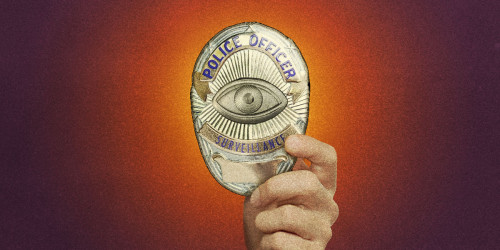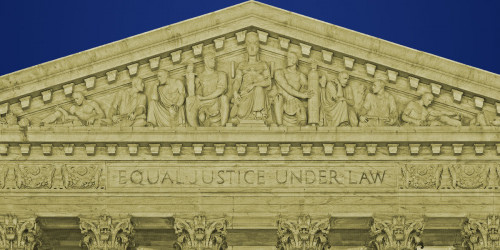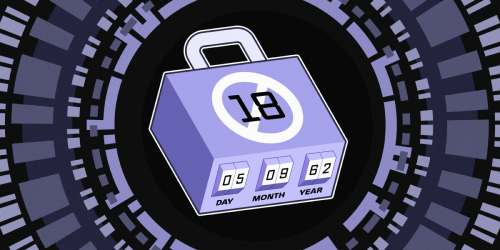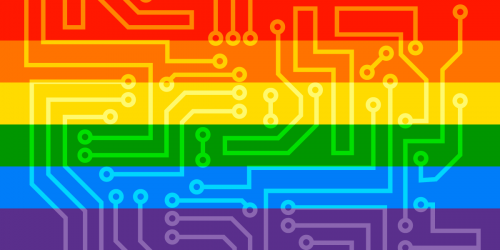Lawmakers and regulators around the world have been prolific with passing legislation restricting freedom of expression and privacy for LGBTQ+ individuals and fueling offline intolerance. Online platforms are also complicit in this pervasive ecosystem by censoring pro-LGBTQ+ speech, forcing LGBTQ+ individuals to self-censor or turn to VPNs to avoid being profiled, harassed, doxxed, or criminally prosecuted.
The fight for the safety and rights of LGBTQ+ people is not just a fight for visibility online (and offline)—it’s a fight for survival. This International Day Against Homophobia, Biphobia, and Transphobia, we’re sharing four essential tips for LGBTQ+ people to stay safe online.
Using Secure Messaging Services For Every Communication
All of us, at least occasionally, need to send a message that’s safe from prying eyes. This is especially true for people who face consequences should their gender or sexual identity be revealed without their consent.
To protect your communications from being seen by others, install an encrypted messenger app such as Signal (for iOS or Android). Turn on disappearing messages, and consider shortening the amount of time messages are kept in the app if you are actually attending an event. If you have a burner device with you, be sure to save the numbers for emergency contacts.
Don’t wait until something sensitive arises: make these apps your default for all communications. As a side benefit, the messages and images sent to family and friends in group chats will be safe from being viewed by automated and human scans on services like Telegram and Facebook Messenger.
Consider The Content You Post On Social Media
Our decision to send messages, take pictures, and interact with online content has a real offline impact. And whilst we cannot control every circumstance, we can think about how our social media behaviour impacts those closest to us and those in our proximity, especially if these people might need extra protection around their identities.
Talk with your friends about the potentially sensitive data you reveal about each other online. Even if you don’t have a social media account, or if you untag yourself from posts, friends can still unintentionally identify you, report your location, and make their connections to you public. This works in the offline world too, such as sharing precautions with organizers and fellow protesters when going to a demonstration, and discussing ahead of time how you can safely document and post the event online without exposing those in attendance to harm.
If you are organizing online or conversing on potentially sensitive issues, choose platforms that limit the amount of information collected and tracking undertaken. We know this is not always possible as perhaps people cannot access different applications. In this scenario, think about how you can protect your community on the platform you currently engage on. For example, if you currently use Facebook for organizing, work with others to keep your groups as private and secure as possible.
Create Incident Response Plans
Developing a plan for if or when something bad happens is a good practice for anyone, but especially for LGBTQ+ people who face increased risk online. Since many threats are social in nature, such as doxxing or networked harassment, it’s important to strategize with your allies around what to do in the event of such things happening. Doing so before an incident occurs is much easier than when you’re presently facing a crisis.
Only you and your allies can decide what belongs on such a plan, but some strategies might be:
- Isolating the impacted areas, such as shutting down social media accounts and turning off affected devices
- Notifying others who may be affected
- Switching communications to a predetermined more secure alternative
- Noting behaviors of suspected threats and documenting these
- Outsourcing tasks to someone further from the affected circle who is already aware of this potential responsibility.
Consider Your Safety When Attending and Protests
Given the increase in targeted harassment and vandalism towards LGBTQ+ people, it’s important to consider counterprotesters showing up at various events. Since the boundaries between events like pride parades and protest might be blurred, precautions are necessary. Our general guide for attending a protest covers the basics for protecting your smartphone and laptop, as well as providing guidance on how to communicate and share information responsibly. We also have a handy printable version available here.
This includes:
- Removing biometric device unlock like fingerprint or FaceID to prevent police officers from physically forcing you to unlock your device with your fingerprint or face. You can password-protect your phone instead.
- Logging out of accounts and uninstalling apps or disabling app notifications to avoid app activity in precarious legal contexts from being used against you, such as using queer dating apps in places where homosexuality is illegal.
- Turning off location services on your devices to avoid your location history from being used to identify your device’s comings and goings. For further protections, you can disable GPS, Bluetooth, Wi-Fi, and phone signals when planning to attend a protest.
LGBTQ+ Rights For Every Day
Consider your digital safety like you would any aspect of bodily autonomy and self determination—only you get to decide what aspects of yourself you share with others, how you present to the world, and what things you keep private. With a bit of care, you can maintain privacy, safety, and pride in doing so.
And in the meantime, we’re fighting to ensure that the internet can be a safe (and fun!) place for all LGBTQ+ people. Now more than ever, it’s essential for allies, advocates, and marginalized communities to push back against these dangerous laws and ensure that the internet remains a space where all voices can be heard, free from discrimination and censorship.













